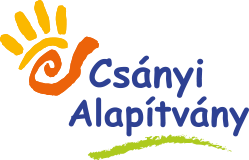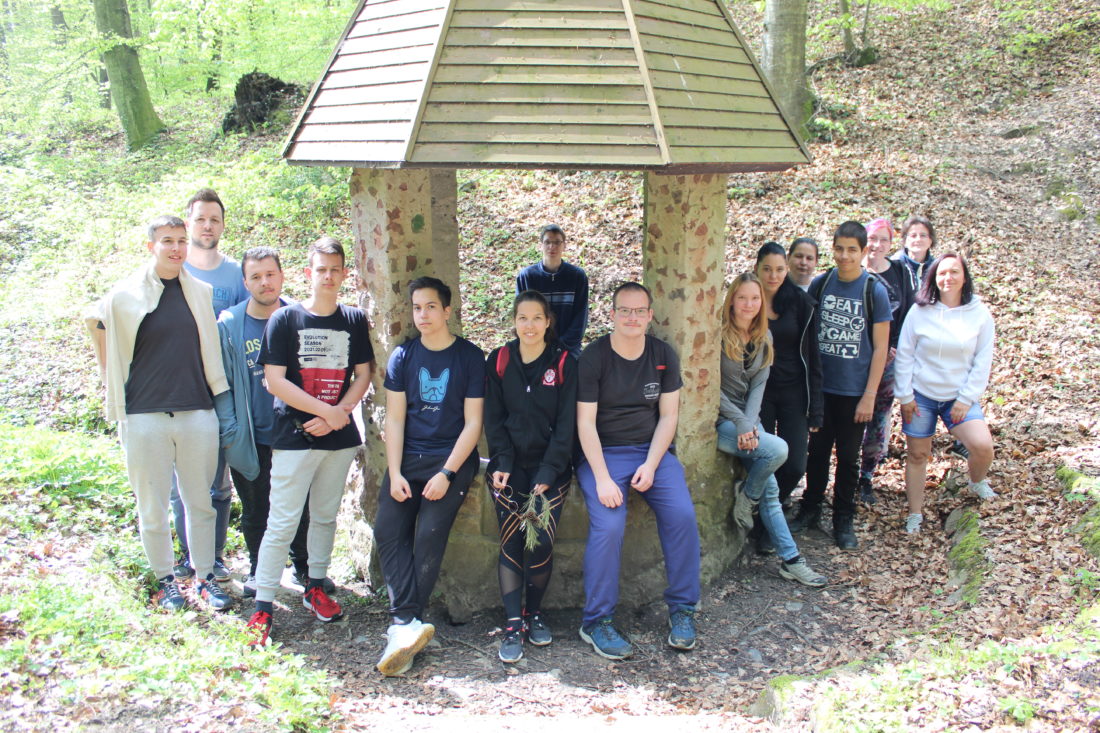
An exciting weekend in Kaposvár
This school year, in our Roads project, the objective of our Hiking Club is – besides roaming in nature – to discover places that are hidden or lost in time in Somogy County, to get to the places that are waiting to be rediscovered, to discover its history. The destination of our tour on 22 April was the Denta forest, near the village of Bánya, a favourite of ours: two legendary wells of the Zselic, the Bottomless Well and the Mátyás Well.
Bánya is a particularly dear place for our group, we have been here several times before on our autumn project trips, and in 2017 we planted a tree. This time we were happy to take a picture of the now strengthened ash tree. And we couldn’t miss the opportunity to enrich nature with another tree on Earth Day this year. The landscape is just as beautiful now as it was last time, when it was in its autumn colours. The distance was not too great, but it was a good opportunity to discuss our fears and strategies in preparation for the upcoming graduation.
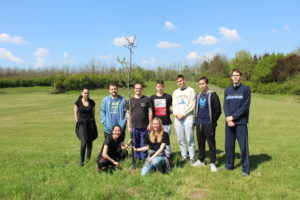
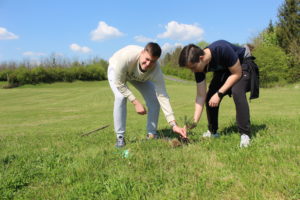
Denna was a small settlement that existed and flourished in the Middle Ages. The farmers of the time watered their animals at a large well on the edge of the village, which once swallowed a cart with two oxen without a hitch – hence the name “no end to the watering hole”, and we still know it as the Bottomless Well.
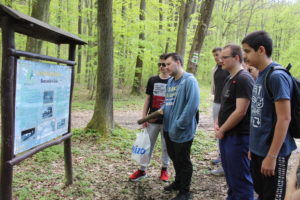
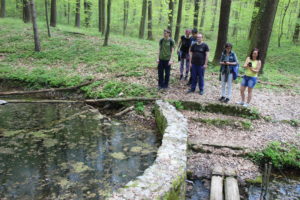
From here we drove a few hundred metres through the beautiful spring forest. The more observant could see the migrating flocks of deer and roe deer, as well as a baby owl peacefully dozing in a tree-top.
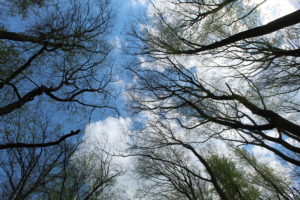
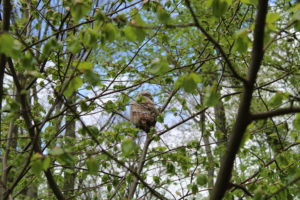
We learned that the well named after our righteous king was named after a legend rather than historical fact: the famous historical figure never actually visited this place, only his soldiers may have been here on one occasion or another. We ended the day with a good bacon barbecue, for which our volunteer Adam Balogh had already joined our team.
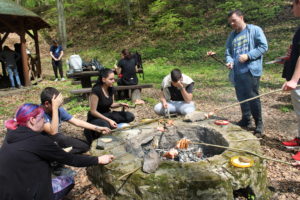
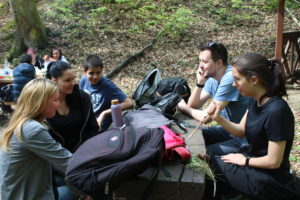
After the Saturday excursion, we had a very different experience on Monday afternoon. In the Kaposvár Puppet Theatre (within the framework of the Theatre Olympics), students of the puppetry department of the University of Theatre Arts of Târgu Mures presented their exam performance “Inside the Ladder”, a selection of Sándor Weöres’ works. Before the performance, Dr Péter Gombos spoke to the audience about the poet, whose poems we all know. Fewer of us in the audience knew that the poet of children’s poems had never actually written “children’s poems specifically for children”, and that it was only by chance that he had entered the literary canon in this way. The uniqueness of his poetry, his special musicality and the diversity of his works were briefly but interestingly described in the introduction.
The performance was dazzling, at once hilarious with the poems and then so profound with the thoughts they contained in a strange visual framework that I was amazed it could be done. The performance appealed to all my senses at once, as I could sense both their playfulness and their seriousness from the spectacular dancing, the poems, their setting to music, and the sound. The hour-long show gave me hours of content, highlighting the genius of Sándor Weöres. All credit to his young puppeteer(s) who displayed incredible images, conjuring the sun from their hands; from a few stretched rubber bands, the whole universe, which was both a prison of self and a symbol of infinity. But I was struck by the simplicity and astonishing grandeur of the way they depicted the bird, or brought to life the people they met with the white ball on their fingers. The whole performance was undulating and pulsating, making me want to laugh at one point and then, rather absent-mindedly, to think. One after another came sentences that I would like to write on the wall of my room, or even on the sky, for all to see, to read, to believe, that it was worth it. Thank you for the opportunity, for the experience.
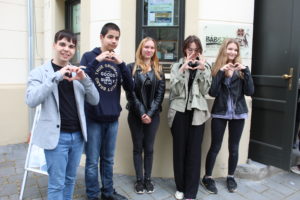
Eszter Sárközi
